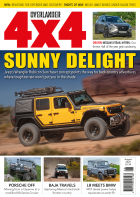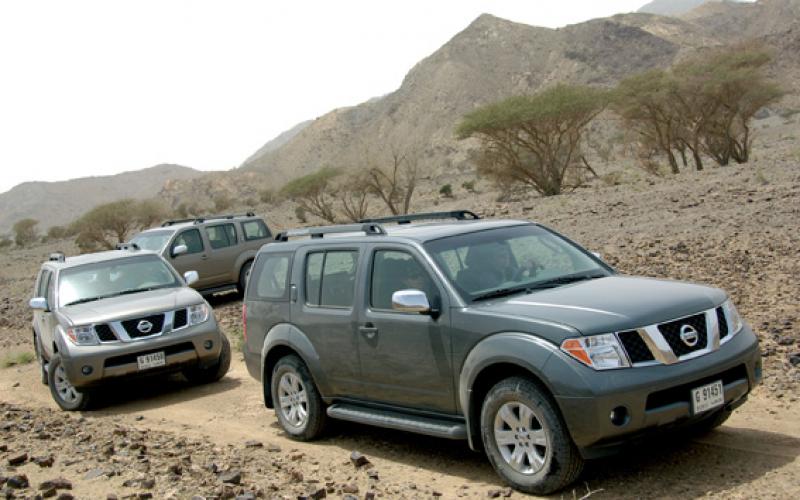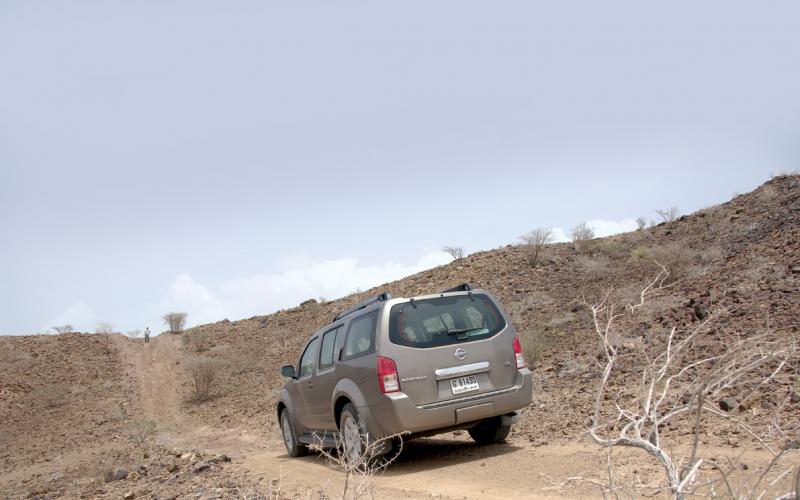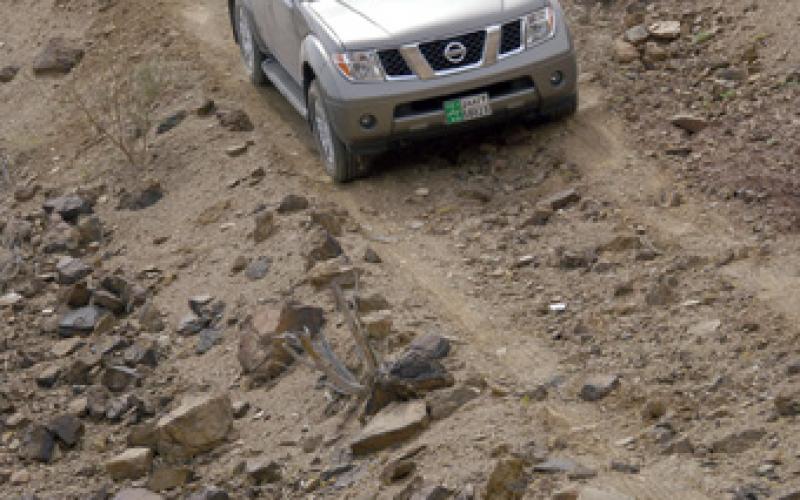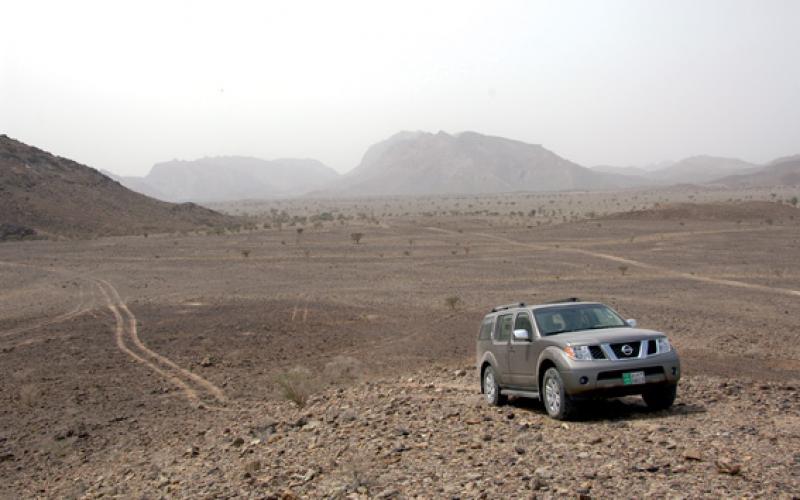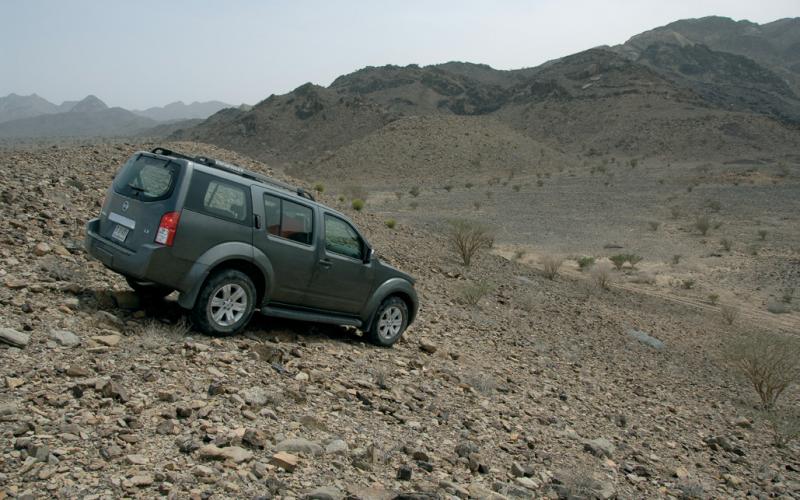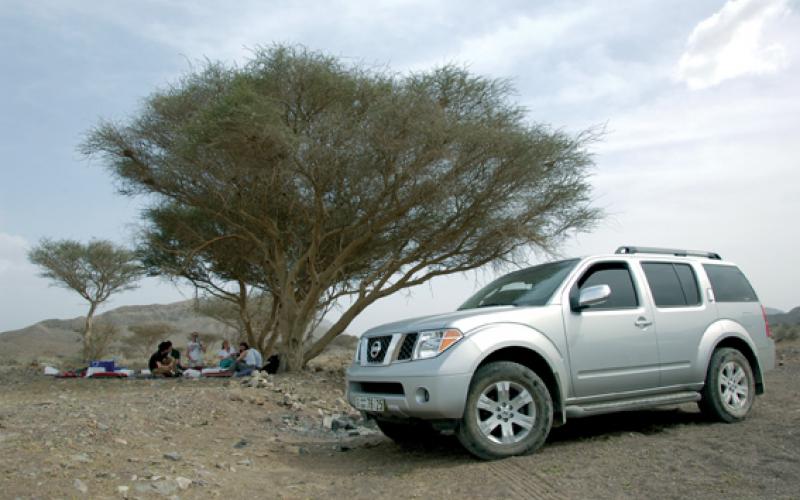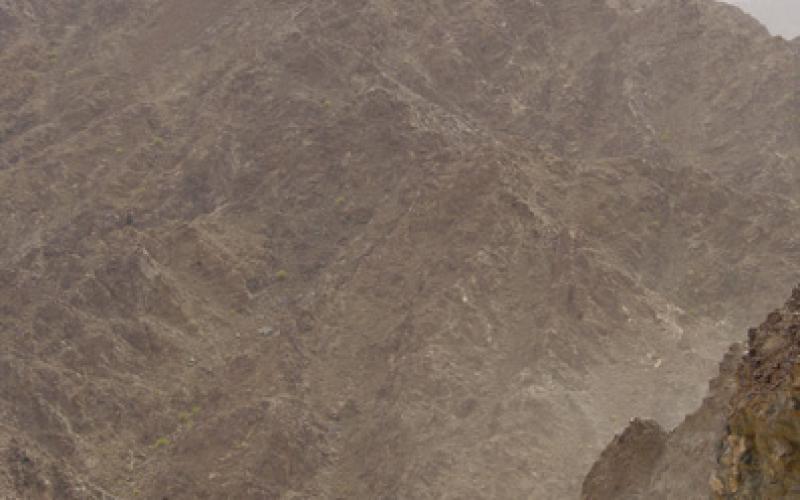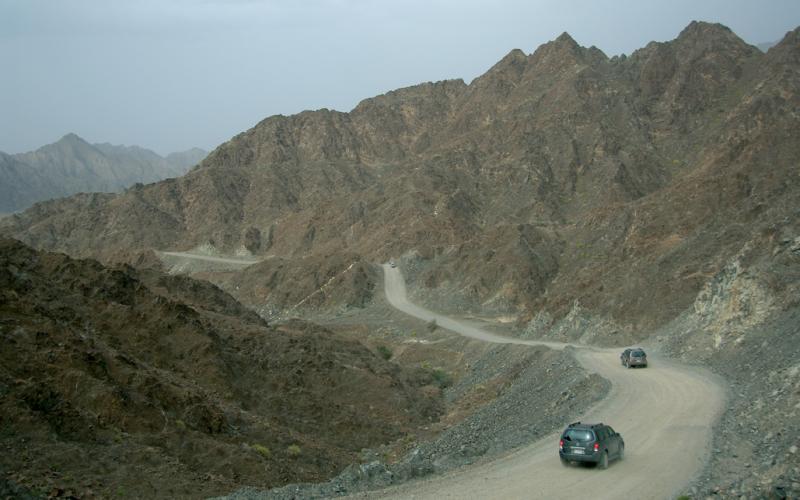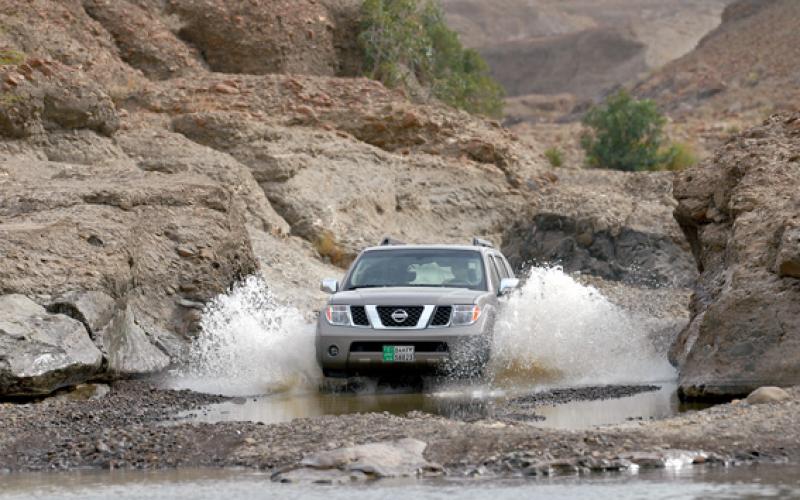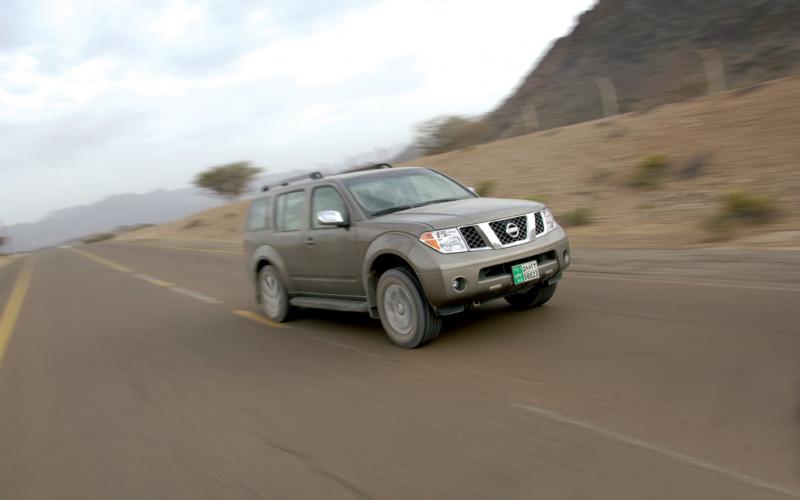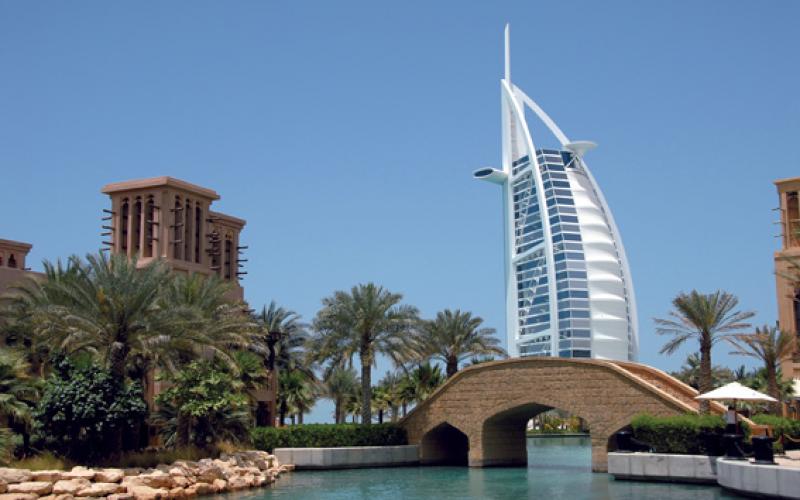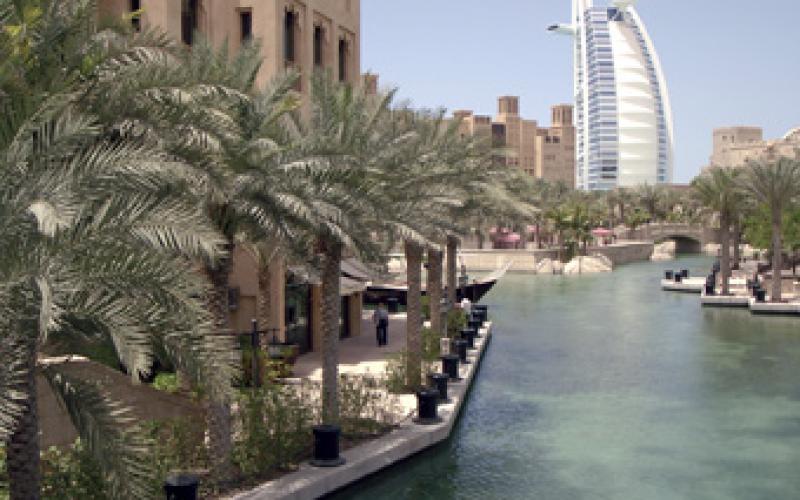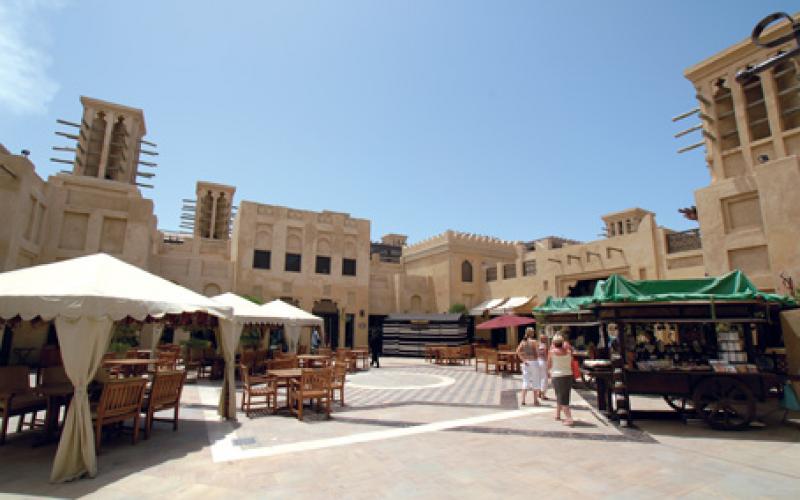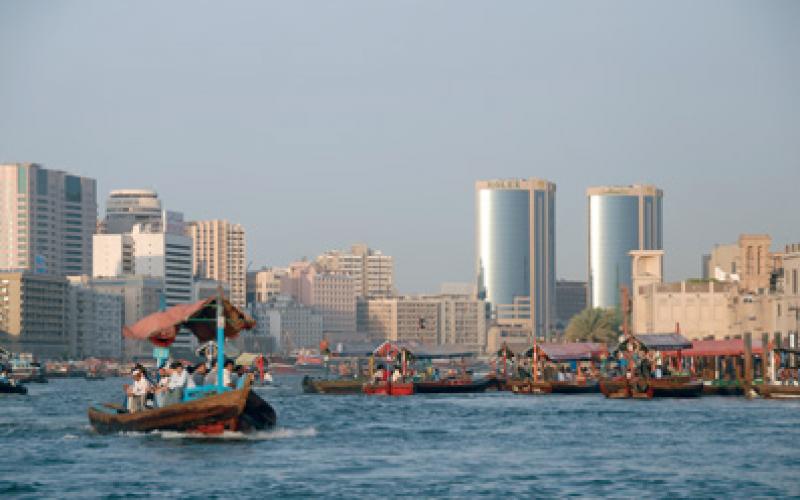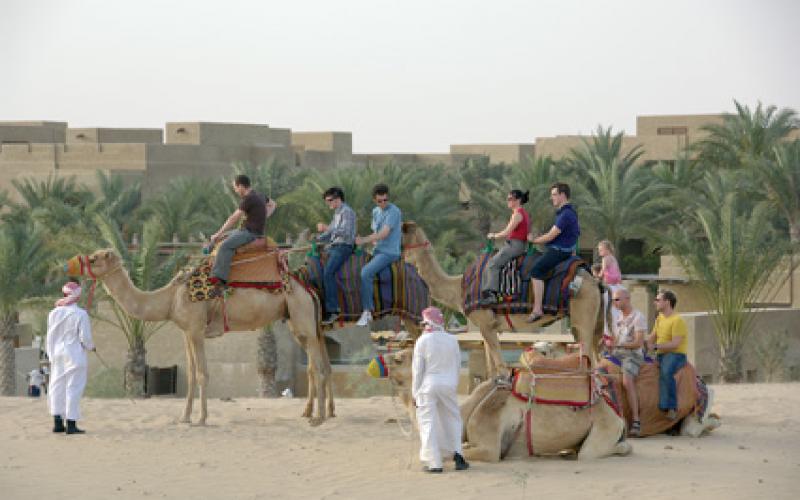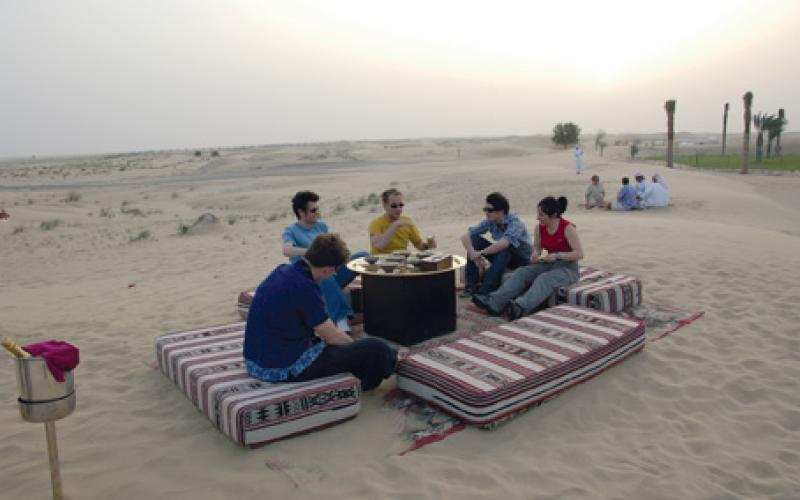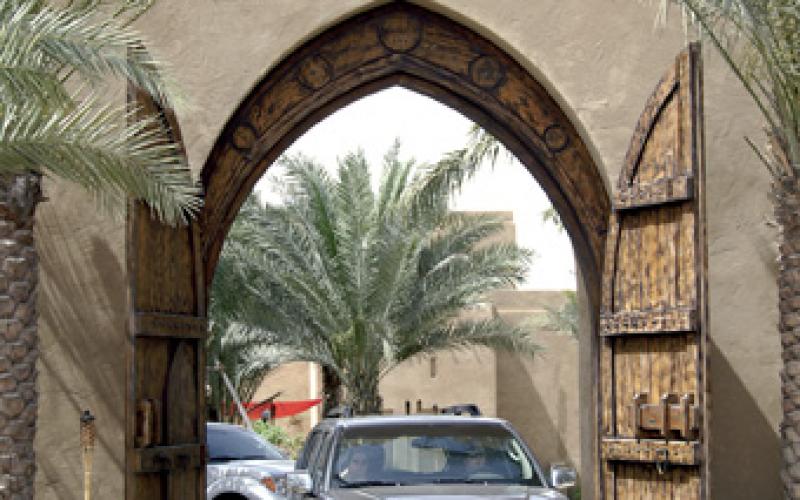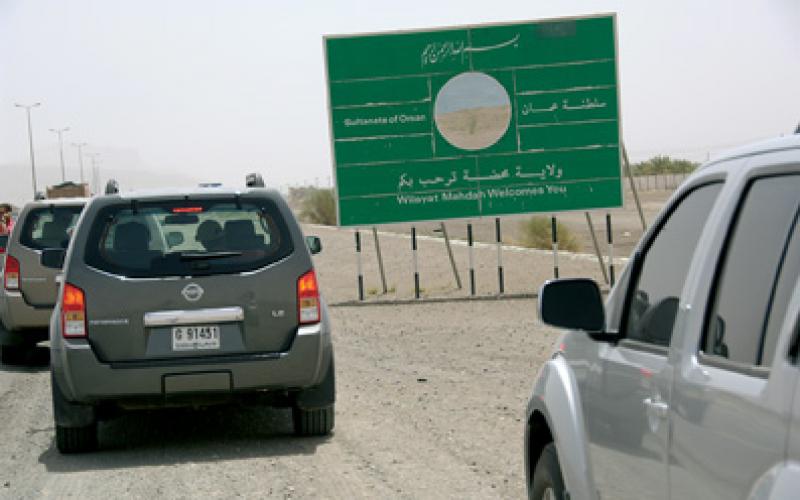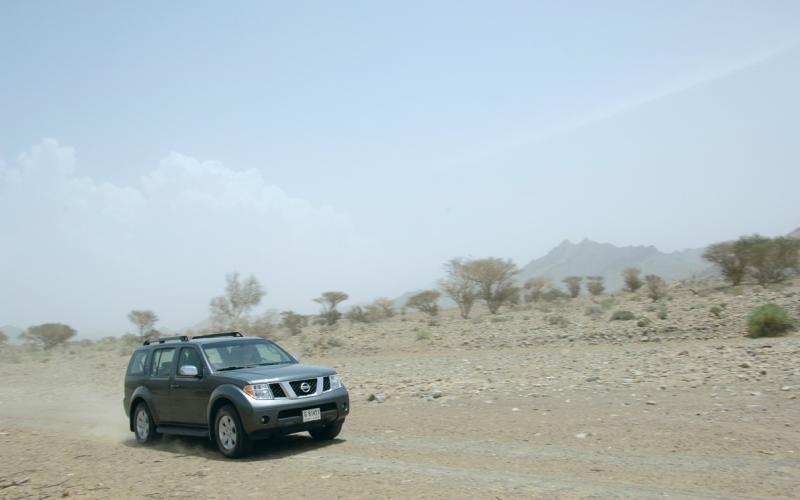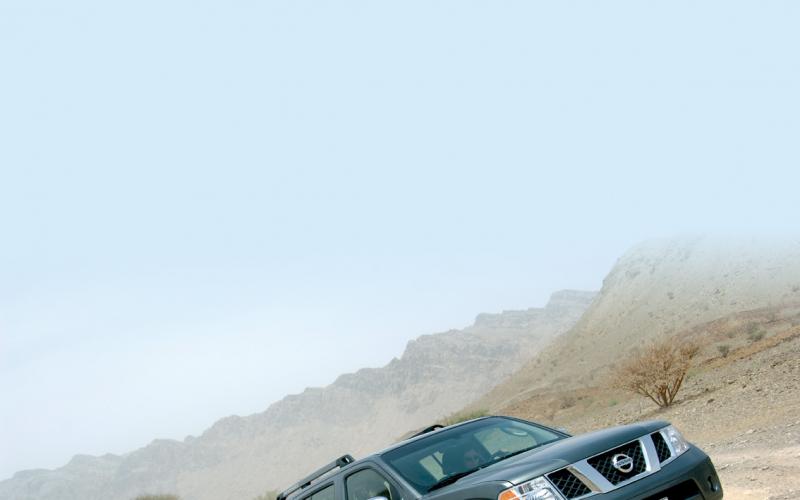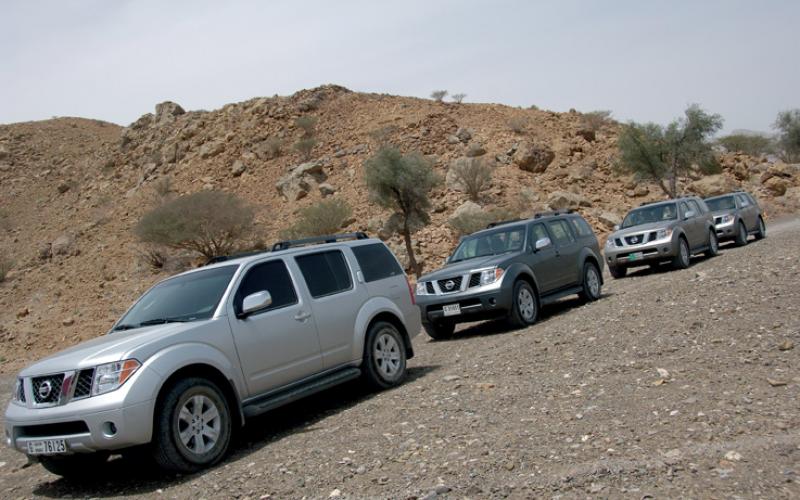Heaven On Earth
Dubai is known for skyscrapers, celebs and absurd wealth. But its more than just a sun-drenched playground for philandering footballers – with gorgeous tracts of deserted wilderness surrounding the city itself, it’s an off-road paradise too. And as an antidote to the woes of 4x4 ownership back home in Britain, it really is a little piece of heaven.
As you’re probably aware if you’re reading this, being a 4x4 owner in Britain is not always a very pleasant identity to hold. As well as having to put up with the everyday hassles of driving around this crowded island, including traffic jams, high road taxes and extortionate fuel costs, we’re also faced with the added burden of enduring a multitude of hypocritical bores who delight in informing us that our exhaust fumes are deadlier than plutonium, that our vehicles are specifically designed for running over small children, butterflies and rare woodland flowers, and that one day when the sun has been blocked from the sky and the acid rain is melting our faces, it’ll all be our fault.
By a delicious irony, of course, compared to spending the rest of eternity with people like this the end of the world actually seems like quite an attractive prospect. Not least because in their endless dedication to the cause of making life ever-more crap for anyone who doesn’t share their fascist outlook, in 2006 the Ban Everything lobby got the government to close about 50% of the rights of way open to 4x4 drivers when the Natural Environment and Rural Communities Act brought the hammer down on a freedom which had until then been enjoyed by generations of responsible, law-abiding Britons.
Not that the traffic jams, the punitive taxes and the finger-wagging harpies ever actually manage to make 4x4 ownership into a bad thing, of course. But all the same, what a pleasure it was to escape all these difficulties for a few days by fleeing to a place where 4x4s aren’t just accepted but the norm, where the off-road routes are free for everyone to enjoy and where, instead of grey skies and afternoon drizzle, the sun shines all year round. That place is Dubai, and the only problem is that it’s more than 3000 miles away.
Now, if you’ve been weaned on Top Gear and you think every motoring publication is dripping with money and able to finance extravagant foreign stunts whenever some hack or other decided he wants to top up his tan, think again. I ought to make it clear that this trip wasn’t financed by Total Off Road; because, let’s face it, you’d never buy a copy again. On the contrary, such is the tragic plight of our travel budget, were we footing the bill we’d be lucky to make it as far as Dover, not Dubai. No, our generous hosts were the good people at Nissan, who were keen to demonstrate what a foreign 4x4 adventure is all about and had a fleet of Pathfinders waiting to do it in.
Now, Dubai is one of those cities whose reputation for largesse actually does it no favours. If the very mention of the place makes you think of sci-fi skyscrapers, expensively irrigated golf courses, over-sized shopping malls and seven-star hotels… well, it has all those things. But it’s much more than a holiday destination for the ridiculously rich. Of chief attraction to the Nissan team was the city’s location in the middle of a barren landscape of sand dunes, mountains and rocks – a landscape that serves virtually no practical purpose except being a perfect venue for some serious four-wheeling fun.
Before we’d even arrived in the city, I had been told the purpose of our visit was to indulge in something called ‘wadi-bashing’ – a slightly disconcerting phrase that sounded like it might once have been used by British colonialists to describe the assault and theft of a country: ‘Let’s give these wadis a bally good bashing, chaps!’ However, after it was explained to me that wadi-bashing is the process of negotiating dry, mountainous streams and river beds from behind the wheel of a 4x4, I couldn’t wait to get stuck in.
Unfortunately, though, I had to wait. The people at Nissan obviously weren’t all kindness and five-star hotels, as some anonymous sadist had decided we should first traverse the desert by a more traditional method.
Camel racing is a popular sport in Dubai, and it isn’t difficult to see why, as these odd-looking creatures are actually possessed of a strong competitive streak. Despite being tethered together, they simply couldn’t bear to walk in procession and were constantly trying to overtake one another, with my legs bearing the brunt of their frequent bodily collisions. My numb bum was also testament to the fact that they’re not particularly comfortable; apparently they can reach speeds of up to 40mph, which frankly doesn’t bear thinking about.
By comparison, being sat in the air-conditioned driver’s seat of a Nissan Pathfinder was pure luxury. As they drive on the right in the UAE, the Pathfinder was an American-spec SE version; this is almost identical in equipment to the Aventura model offered in Britain five years ago, though of course whereas almost without exception Brit Pathfinders are diesel-engined, out here every prod of the loud pedal brings up the revvy snarl of a 4.0-litre V6 petrol unit.
Once again, we set off in a convoy system, though this time with better discipline than the camels, as we headed out of the city in our three Pathfinders. Bringing up the rear was one of Nissan’s super-sized American trucks, the Armada, which basically looks like a Titan pick-up with a station wagon body on it.
Even on this relatively short excursion, the number of 4x4s we encountered was truly astounding. In a country where vehicles are cheap and petrol is even cheaper (the cost of a gallon is less than the cost of a litre in Britain), 4x4s are the preferred mode of transport. It also seems that the hot, dry weather has a magical preserving effect, as we spotted an enormous number of vintage Land Cruisers, mostly in tip-top condition.
Initially, Dubai’s rural roads seemed of a similarly impressive quality, as they’re flat, well surfaced and traffic free. In spite of this, though, it’s almost impossible to maintain a reasonable pace – because a continuous succession of speed bumps constantly slows your progress every few hundred yards. These are not the kind of benign sleeping policemen you can sail over at 20mph, but the harsh, suspension-jarring, bone-rattling sort, where you’re forced to bring your vehicle to a virtual stop before carefully crawling over.
Even more frustrating, these bumps are placed along all the desert roads. So it’s impossible ever to drive with any kind of rhythm. But just looking out over the landscape highlights how empty it is, with not a single soul around for miles. So the chances of a lollipop lady and a line of kids suddenly stepping into the road seemed slim. What, then, were they doing? ‘People here drive like lunatics,’ someone explained, and they really must to have made such an extreme response necessary. It seems there are some advantages to riding a camel after all!
As we drove through the desert heading east, it was possible to see the landscape change colour as the sand went from a pale yellow to a deep orange-red. Then, quite unexpectedly, the lead Pathfinder pulled off the highway and everyone jumped out of their vehicles to take snapshots of a rather inconspicuous road sign. If you look at a map of the UAE, you’ll see a small section of Oman right at the top, eastern tip of the country, and this sign was all that marked the border between the two. I imagine if we’d tried to venture into Oman proper, it would have been a slightly more complex affair. But where there’s nothing but wilderness as far as the eye can see, it seems that a sign really is all that’s needed.
Here the flat, sandy terrain quickly gave way to rocks and winding roads and the jagged outline of rocky mountains soon came into view. We were about to travel through a fairly remote area, prompting Nissan to call in the services of a local ‘fixer.’
Called Arabian Adventures, the company looking after us here specialises in these kinds of activities. As well as providing each vehicle with a driving instructor, it was also responsible for setting the route and had been encouraged by Nissan to make it ‘interesting and challenging.’ Throughout the journey I was accompanied by a pleasant Iranian chap called Arash, who sat in the back seat and, aside from the occasional hurried instruction, appeared happy and relaxed.
Engaging 4WD and high box on the Pathfinder’s dashboard, the moment finally came to part company with the tarmac and we headed down a rocky embankment to begin our off-road adventure. Although there wasn’t any distinctive path to follow, the gravel-like surface proved fairly easy to traverse and with only the occasional large stone to negotiate it was possible to take intermittent glances at the surrounding scenery. The grey rocky plain we were crossing was surrounded on all sides by dark-red hills and mountains; a landscape that was startlingly lifeless, except for a single solitary donkey somewhere in the distance. I couldn’t help but wonder how this poor creature had arrived in such a harsh, hostile climate and how it could possibly survive when there was no obvious source of food or water for miles.
Perhaps I became a little too immersed in the plight of this poor creature, as Arash suddenly began shouting ‘Tree! Tree! Tree!’ with an increasing degree of urgency. ‘Okay’ I thought, presuming he’d spotted a sycamore in the distance, ‘I know the vegetation is sparse out here but there’s no need to get so excited about it.’ The next instant, there was a loud thwack followed by a funny scraping noise along the left-hand side of the car.
I don’t want to sound pedantic, but when Arash was shouting ‘Tree!’ he was actually referring to a rather tough, spiky plant ahead of us.
Fortunately, when we inspected the Pathfinder we found it was only marked by a few dusty scratches. Yet I couldn’t help but be amazed by my ability to come out into such a remote region and drive into the only living organism around for miles (except for the donkey, of course).
Something I’ve omitted to mention so far, possibly because it’s so obvious when you’re out there, is that Dubai and the surrounding regions are very, very hot. It was late April, near the end of the wadi-bashing season, when temperatures start getting a little too uncomfortable for all concerned. At one point, the Pathfinder’s dashboard thermometer read 55 degrees. Even Arash, who I imagined would be acclimatised to the heat, poured water on to a white towel and placed it over his head each time we left the vehicle. I could stand it outside for about ten minutes before it became too much and I’d be forced back inside the air-conditioned shelter of the Nissan.
So it hardly helped matters when the Arabian Adventures team decided to turn up the heat by leading us to the bottom of a steep, and dizzyingly high, rocky hill. Like a precise military operation, the Armada sped to the head of the convoy and an official jumped out, clutching a walkie-talkie. The idea, I gathered, was for each of us to follow the Armada, which sped easily to the top of the incline, though I had the feeling it would be more difficult for us.
With a nervous jolt, the first Pathfinder set off along the route directed by the spotter from Arabian Adventures. Initially, it seemed to make light work of the climb, however, as it neared the summit it suddenly lost purchase, stopped and rolled back several feet. Reversing back further, the driver tried again but made the mistake of following the same path, with the inevitable traction problems reccurring. By this time, the man with the walkie-talkie had clambered up the hill to lend a hand, and was wildly gesticulating the exact path to be taken. Third time lucky, the Pathfinder found its way to the top.
Next in line was me, and with everyone watching the pressure was on. I quickly convinced myself that if I didn’t get up the hill in a single, smooth movement, not only would my driving abilities be called into question but so would the credibility of this magazine, my capabilities with the opposite sex, the legitimacy of my genetic lineage and my once legendary capacity to take a punch from Johnny Fairfax without crying.
Switching into low box, I set off slowly and, under Arash’s instruction, gradually increased acceleration as we climbed. Like our forerunner, we made the ascent without encountering any difficulties until we were within a few yards of the summit, where a sudden increase in gradient forced the wheels to slip on the dusty, stony surface.
‘Gas! Gas! Gas!’ shouted Arash, who I noticed had the habit of repeating things three times whenever he was excited. I stepped hard on the pedal, but the wheels continued to spin and I awaited the crushing and humiliating moment when the vehicle would roll backwards, to the sound of jeers and loud derisive laughter from below. In one last-gasp effort, I rammed the accelerator firmly to the floor while praying ‘Please God, don’t let me fail,’ – whether I actually said this out loud or not, I can’t be sure. But it worked, because with an enormous roar from the engine and a cloud of dust of the wheels, the tyres finally dug in to the loose ground and pulled us to the top of hill to the triumphant sound of the Indiana Jones theme tune – though I’m pretty sure this was inside my head.
The view I was rewarded with at the summit was overwhelming. For miles around, the rocky landscape could be seen baking silently under the scorching sun, looking so desolate and untouched by human hand it could almost have been another planet. Such scenery actually makes you feel quite insignificant – which is a sensation I’m not particularly unused to – and elicits quite a calm, contemplative state of mind.
Coming down the hill was a great deal easier than going up, as I simply held the steering wheel straight while easing off and on the brakes – an acceptable driving style on this kind of dry, grippy terrain where there is little danger of slipping. Once everyone had reached the bottom, it was time for lunch and we followed the Armada to where the Arabian Adventures team had set up a little dining area under the shade of a rare, isolated tree. We were each handed an enormous lunchbox filled with meat and vegetarian sandwiches, yoghurts, fresh fruit, cheese and biscuits and almost everything you’d find in a traditional English pack-up. Although it was all delicious, coming to a middle-eastern country and having your westernised palate catered for so meticulously makes you feel a little guilty, though the nearby crawlings of a large number of dung beetles helped provide more of an Arabian feel to the proceedings.
After we’d eaten, we drove on into a more fertile region where the sand and rock was punctuated more frequently by plants and trees. The first wadis we passed through were a bit disappointing as the flat, featureless land gave little evidence of the rivers that had flowed here less than 500 years ago. However, we were soon following a long, winding and partly surfaced road which took us in and out of a whole range of different wadis, some of which were completely dry while others contained a few feet of water. Particularly impressive was the Wadi Alquahki, a site that was obviously popular with the region’s thriving 4x4 community. Here we discovered a group of young children swimming and splashing about in the shallow water of a rock pool while their father, true to his stereotype, watched from the bonnet of an old Land Cruiser. Further on we encountered a group of local off-roaders, all in traditional Arabic dress, whose RAV4 had somehow become stuck in the middle of a wadi. Fortunately for them, the Arabian Adventures team was on hand to tow the vehicle free.
As we splashed through this section, I noticed that Arash had dozed off in the back seat. He did manage to momentarily rouse himself to shout ‘Tree! Tree! Tree!’ and laugh hysterically for ten minutes before falling back to sleep, though.
Coming out of the Wadi Alquahki region, we passed through a small, isolated village where I exchanged an inquisitive stare with a young boy sat out in front of a crude single-storey building. I couldn’t help wonder how completely different our lives must be, though the Manchester United shirt he was wearing and the satellite dish attached to his house suggested we might have more in common than I initially thought.
As we crossed the border back into the UAE, Arash pointed out a distant cluster of white buildings on the horizon and informed me it was a ‘camel village.’ Apparently there are several of these settlements dotted around the region; they were built by the government specifically to house the country’s indigenous population, who are paid to continue their traditional livelihood of farming camels.
Soon juxtaposing this backdrop, we arrived back among the heavy traffic and grandiose architecture of Dubai for an evening of Arabian culture. Here we enjoyed a huge banquet of delicious local food, while being entertained from an open-air stage by a succession of musicians, singers and performers. A particular highlight was a belly dancer who was obviously keen on audience participation. After a couple of numbers, she would leave the stage and head out to grab an unwitting member of the audience in order to make them dance with her.
I discovered several ways of avoiding this humiliating experience. One was to lodge myself in at the table, hold tight and avoid all eye contact; the second was to feign injury – though in retrospect, faking a limp on the way to the toilet while attempting to flee a gyrating, semi-naked woman may have been open to misinterpretation. After several beers and much laughter, the night was eventually sent whirling away in a cloud of shisha smoke.
After the following day’s seven-hour flight, it was quite a shock to be back in Britain. As I sat queuing in the rush hour traffic of the M25, wipers set fast against the rain, the magical 4x4 paradise of Arabia seemed a whole world away.
It might be on the same planet, indeed, but who can count the ways in which this amazing region feels like a world apart? It certainly is for the many expats who go off to make their fortune in Dubai; and whether you come here to live, or to experience the holiday of a lifetime, if you’re even slightly interested by off-road adventures you’ll rapidly conclude that in the magical landscape of Arabia, you’ve definitely found heaven.



